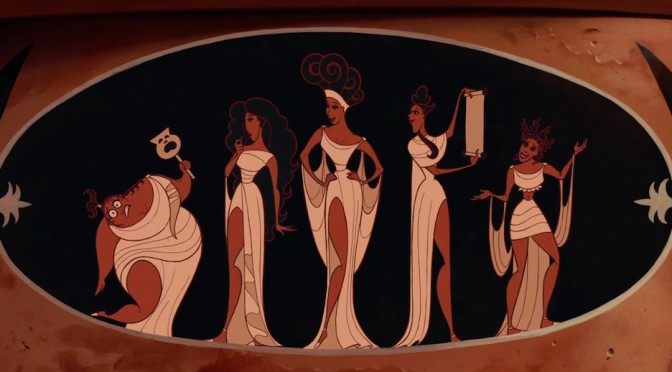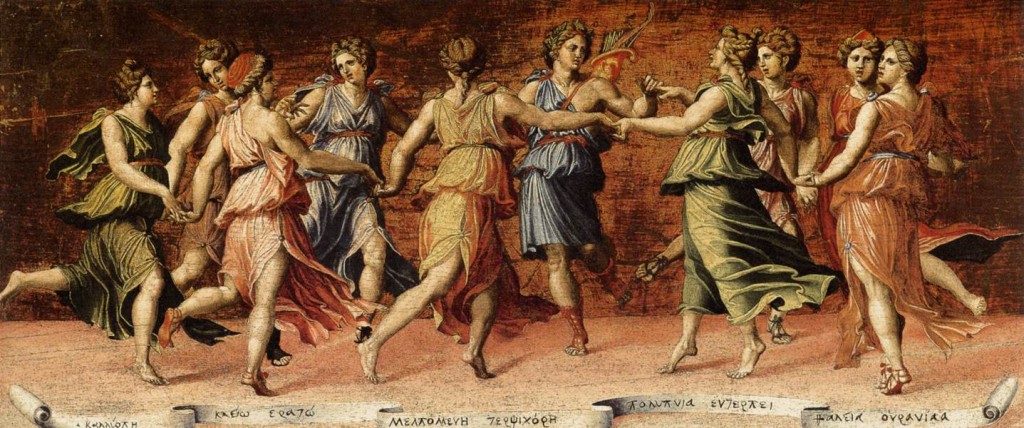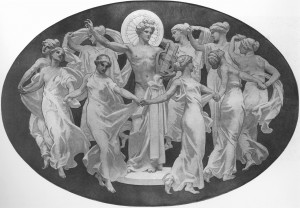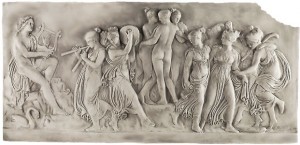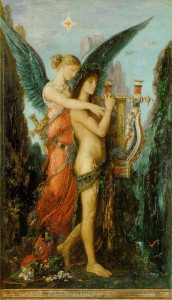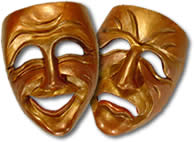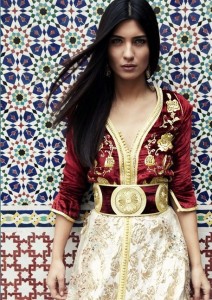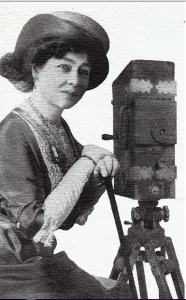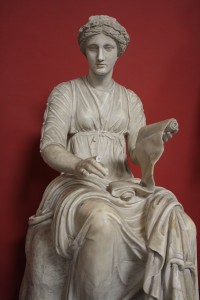In the Alters’ World (and the series of books found here), creatures of legend reveal themselves to the world. Born through genetic abnormalities, defects and mutations, the Alters have lived for centuries as outcasts of human society, hiding their true nature from the world while colorful stories have been written by many to describe what they’ve seen. How are these creatures different from what was described in the stories? What relationship do they have with humanity? Every entry of the Alterpedia will delve into a new creature from around the world. This week we cover:
Muses
Source of inspiration, guidance for mankind, often invoked in the modern day by the likes of writers, the Muses were the goddesses of inspiration in all fields where creativity was helpful. Covering fields such as art, science, literature, and anything else where instructions weren’t clear – Muses could be credited for much of what we call “civilization”. Though rarely used in serious fashion today, the belief in them has left a mark on who we are as people in the western world. Even the term “music” comes from their name.
But who were the Muses, what was their goal, why did they leave such a mark on us? Why would “goddesses” deign to give us their attention? For that, we must take another look into the world of the Alters…
Appearance
Mythology
Physically, the Muses were an embodiment of perfection. As lesser goddesses of the Greek (and eventually Roman) pantheon, they were portrayed as being Greek women with dark hair and Mediterranean features. They, like all other members of the pantheon, were seen as a perfected version of the human form and reflected the ideal of beauty standards from the eras they were first depicted. Though rarely shown naked (unlike others of the era), their figures were shown to be similar to other goddesses of the time. In a word, their beauty could be described as “inspiring”.
Aside from this, their depiction depends greatly on the artist at the time. Most art of the Muses was not contemporary to their original worship and many times they were shown with features reflecting the culture of the artist. Being sisters and often described in vague terms, this meant that many of the images we have of the Muses shows them to be so interchangeable and indistinct from each other that they could be described as beautiful but almost generic. They always reflected the ideal of the artist’s culture rather than who they were. Some would go so far as to say this was even part of their description, as the Muses were manifestations of ideas and thus always connected to the interpretation of those they interacted with. Because of this, at times, they even had wings.
However, the thing that made them most distinct from each other were their accessories. While their clothing was fairly standard, all Muses held the tools of the trade which they were attached to. Examples of this included Clio’s scrolls of historical text, Calliope’s writing tablet, and the musical instruments of Euterpe and Erato. These tools were always on hand and, at times, could be used to identify the muses even when they were not physically present themselves. One key example of this being the masks of Melpomene and Thalia, who each represented an aspect of Greek theater and were represented by masks now iconic on their own.
Alters
In truth, many of these depictions were wrong as the Muses of old were ancient Alters only a generation removed from The First Ones. Being residents of the fallen city-state of Atlantis, their features were most heavily reflective of North African and Middle Eastern people. This meant that, despite being depicted as quite fair-skinned, most actual Muses had darker, olive skin tones more reflective of the Berbers, Turks, and other peoples who actually came in conflict with the Greeks historically.
This is not to say that their appearance was completely wrong, however. Many Muses would change their fashion and aspects of their appearance to blend with the local culture and often-times even appeared to have the features of local women through cosmetics. Combined with that generic beauty which made them relatively indistinct from each other, many depictions of Muses in artwork were the genuine, if misguided, interpretation of the artists which encountered them.
As for the tools of their trades, these were often kept on hand but were not as strictly assigned as the mythologies would lead one to believe. Many Muses carried what tools they needed for the task they had to accomplish next and were often multi-talented. This meant that many who tried to identify the women they were dealing with would generally misidentify a Muse for one of the famous members of the race when they could, in fact, be dealing with someone much lesser known. These Muses wouldn’t correct the misunderstanding, however, as name recognition often made their jobs easier.
Abilities
Mythology
The Muses were masters of their crafts. Whatever field they dedicated themselves to was one they reached the pinnacle of with ease. Though many humans could try, the act of trying to surpass the Muses in their field of study was thought to be impossible and many stories tell of how futile the effort is. Whether it be art, music, science, or literature, the Muses had no equal.
This, however, did make them also the source of inspiration and study themselves. As masters of these fields, they were always several steps ahead of mortal minds and could inspire thoughts in those they felt had potential. Often these inspirations were means of granting new wisdom to humanity, but sometimes there were other goals in mind.
Though rarely described in great detail, the act of inspiring people could be either a physical or intangible act. Some images depict the muses simply presiding over the human they’re inspiring. Others show them in direct contact and coaxing them forward. Still other stories describe them having appeared in dreams. Given their status as goddesses it is best to assume that all of these were quite true and that how the Muse would go about guiding their subject was dependent mostly on mood and personal preferences.
Alters
As one of the first generations of Alters to come after the First Ones, the Muses are an ancient ancestor to several races which exist today such as Succubi, Witches, and Kitsune. Like their descendants, these Muses have the ability to alter the chemistry of those around them to change the way an individual thinks and how they feel. This does not always involve inspiring an idea, however, and many times Muses have used their powers to reduce stress, increase productivity, or simply make someone more open minded to details they’re missing.
This power doesn’t require direct touch as it is a consequence of powerful pheromones being broadcast by the Muses to all in their vicinity. Often Muses will simply inspire more positive moods and thought processes by simple proximity, usually without even intending so. Because of this, it is not uncommon for Muses to be surrounded by energetic and creative people and will often be described as “the life of the party” or someone who “brightens up the room”.
When needing to do so, Muses can focus their attention on a specific individual and can enhance their effect through direct physical contact. Using touches and closer proximity, Muses can amplify and even modify their impact on an individual to suit that person’s needs. These touches can be simple, with a glancing brush or bump, but have also been known to involve gentle massages and precise application of pressure. Those who have been given this particular form of treatment have gone on to have nearly miraculous breakthroughs and will often credit the Muse in question without knowing her true impact.
Because of their proximity to these people, it is extremely common for Muses to have a very in depth understanding of the fields of those around them. Exposed to the works of many people who become inspired in their presence, it is not uncommon for a Muse to be given an informal class on the collective experience of everyone they meet. Because of this, while known primarily for their work in inspiring others, many Muses are accomplished in their own rights and will generally be recognized in hindsight (sometimes after considerable time) as the real origin of many theories or works credited to others.
Behavior
Mythology
Bound to their various fields, the personalities of the Muses were rooted in the fields they had mastered and the cultures which were depicting them. Often they were seen as ethereal and distant to those they deemed unworthy but closer to those they felt had great potential. This was not entirely a matter of simple judgment, however, as generally there were ulterior motives for some of the darker Muses. In a way still remembered by the phrase, “all-consuming” it was often believed that Muses who became intimately attached to a subject were doing it to do exactly that.
The stories which depicted Muses in this fashion generally presented it with the same reason. The more potential a person had, the greater benefit they would serve the Muse themselves once they were ready. It was believed that the Muse would inspire a person continuously and ensure that their work would be completed at all costs, even if that began to harm the individual. Anything which could sway the Muse’s subject from completing their task would be pushed out of the subject’s life and such subjects would eventually fall into an obsessed need to complete the work.
After the work was completed, however, the Muse would then turn on the subject and devour them – leaving only the work behind in their place. This was seen by the ancient people as the explanation for why certain individuals would become obsessed with the completion of a task even at the risk of their own destruction. Observing artists, writers, and researchers alike slowly ruining their lives for the sake of the work dovetailed nicely into the vision that, somewhere, a Muse was driving them.
This was not enough to deter anyone from trying to invoke them, however, as anyone who was prime for the Muses’ help was also the sort who would want to give themselves over to them. As a result, while knowing this would likely lead to their demise, many ancient creators gave themselves willingly to the Muses and would sometimes even invoke them before the beginning of every project. This function was, eventually, mostly taken over by drugs and coffee.

Alters
Though often acting in their own self-interests, Muses do not typically have a sinister goal in mind. Those who they inspire are often grateful to them and it has been tradition throughout millennia for Muses to offer their services to those with potential so that they could mutually benefit. This stems primarily from their origins as being personal assistants to the great leaders of Atlantis who would have a Muse on hand to act as one of their advisers and personal consultants.
Throughout history, it has been common for Muses to continue to do the same with other world and cultural leaders. This has generally led Muses to lead very affluent and comfortable lives as a result of their personal work and the works of those around them. One peculiarity of their behavior tends to be that, while often capable of doing certain feats themselves, they will prefer to inspire another to do it for them. This is, in part, a result of the persecution faced by Alters following the time of the Olympians and appears to have remained an influence on Muse culture in the centuries since.
However, while often limiting themselves to being the “shadow leader” or even “cheerleader” of any group, Muses are still quite outgoing, helpful, and insightful. Many of the greatest accomplishments of human ingenuity and creativity have been the result of a Muse’s influence, and while they have rarely taken the spotlight…
They are not against making themselves heard.
(I write novels under the influence of my muse. I also have a twitter account which sometimes requires me to be inspired. Sometimes, I wish she’d pet me a little more often so I could get this shit done on time.)


